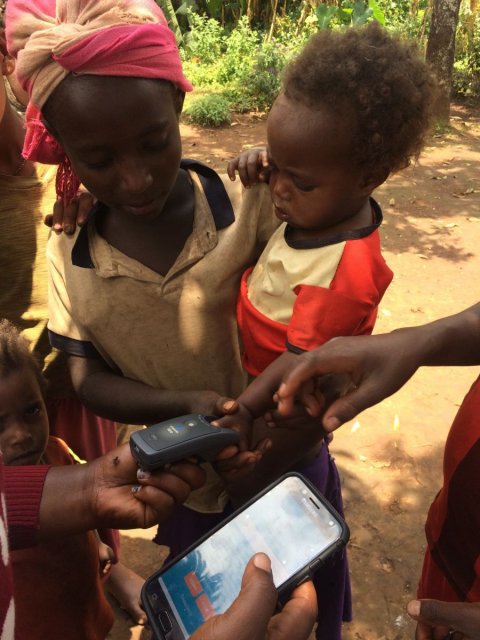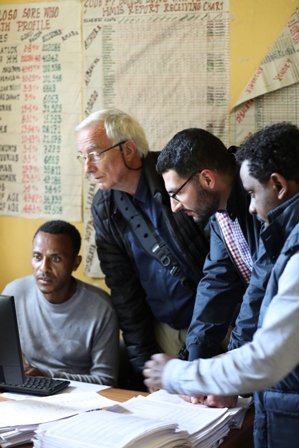Finger prints, tablets and WASH
A major new deworming initiative has been launched to evaluate different approaches and strategies to eradicate parasitic worms from communities in Ethiopia.
Initially focusing on the 2 million people who live in the communities of the Wolaita zone in south-east Ethiopia, the project aims to identify the optimal design of programmes that will break the transmission of both soil transmitted helminths (STH) and schistosomiasis infections.
"Cleans inside and out"

The five-year project will evaluate deworming approaches that seek to ally large-scale drug treatment programmes with initiatives that improve water, hygiene and sanitation (WASH) facilities and practices. Reflecting this comprehensive approach, the project has been given a name of Gashiyaro meaning “cleans inside and out” in the local Wolaytinga dialect.
The Gashiyaro project is an international collaboration between the London Centre for Neglected Tropical Disease Research (LCNTDR), World Vision Ethiopia, the Ethiopian Public Health Institute (EPHI) and Ethiopia's Federal Ministry of Health, with funding from the Children's Investment Fund Foundation.
Previous mathematical modelling by the LCNTDR has shown that the transmission of some species of parasitic worms can be broken in certain settings through provision of multiple interventions, but it has not been attempted at scale in a low-income country through the existing health system.
“Our hope is that the findings from this research will be used to inform the design and effectiveness of future government led national deworming projects. Ultimately we want this research to improve the health of millions of people who currently live with these debilitating parasites.”
Professor Sir Roy Anderson
Director of the LCNTDR
Biometric finger print technology

The innovative project is the first of its kind to evaluate the impact of different treatment strategies and WASH using biometric finger print technology to improve coverage and compliance of the interventions.
Biometric finger print technology will enable accurate identification and tracking of the estimated 200,000 individuals who will receive deworming tablets during the first year of the Gashiyaro project. Creating a register of all those living in the Wolaita zone who comply with treatment is crucial for the monitoring of treatment progress over the course of the project.
''To answer the challenging research questions that this project poses we'll be employing a range of ‘state of the art’ epidemiological methods including new diagnostics, remote data recording, sophisticated analysis methodologies to estimate key epidemiological parameters and various novel methods to track treatment coverage. This data collected will then be interrogated with the aid of mathematical models to inform current and future parasite control policies."
Dr Anna Phillips
Gashiyaro project coordinator, LCNTDR
During the project, LCNTDR will provide technical support and capacity building to EPHI in the evaluation of the project. Together the evaluation team will then be responsible for interpreting and documenting the findings from Gashiyaro.
The implementation of deworming during the project will be conducted by the Federal Ministry of Health, with World Vision Ethiopia leading on the WASH infrastructure and behaviours change communication activities and the finger print technology provided by Simprints.